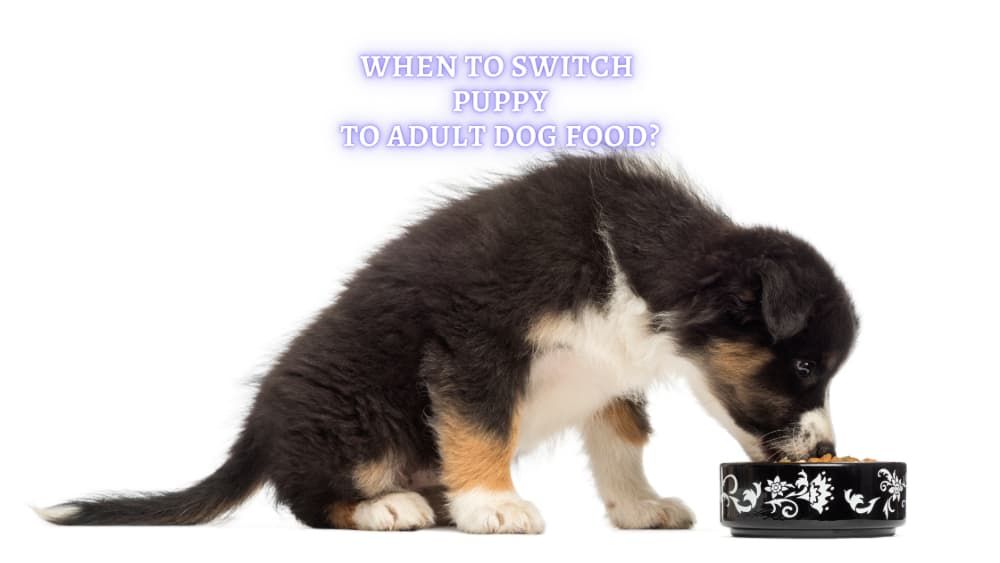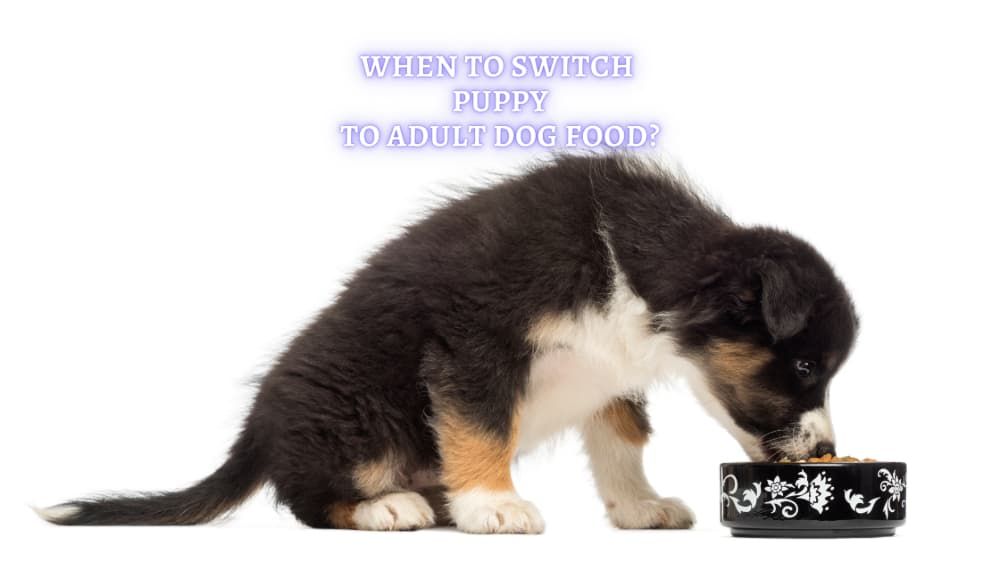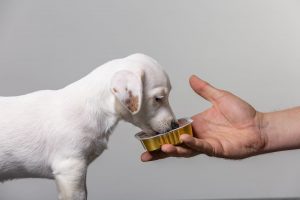
Balanced growth of the puppy is impossible without proper balanced nutrition. In the first weeks of life, this food is the mother’s milk. Mother’s milk, which contains all the necessary nutrients — is the most optimal nutrition for puppies during their growing up. Even though complete breastfeeding cessation usually occurs at 6-8 weeks, most puppies begin to show interest in adult food as early as 3-4 weeks. The needs of the puppy change and the body needs more nutrients than the milk contains. Solid foods are gradually being introduced to its diet, but the transition from milk to an “adult” diet will take a long time.
Dogs of different breeds grow up at different ages, and diet for adult dogs is typically offered when the puppy is finished growing. Therefore, the timing of the transition from puppy food to adult depends on your dog’s expected size and breed.


Image by @lifeonwhite from Pixabay
Small breeds (for example, Dachshund and Pug) can be fed up to 12 months. Medium-sized dogs (such as the Australian shepherd and Border Collie) usually switch to adult food around 9-12 months, and large breeds (such as the Bernese Sennenhundi, Rhodesian Ridgeback) can be given food for an adult dog between 8-12 months.
At this time, it is best to begin a gradual transition to food intended for puppies. If your choice fell on dry food, then at first, it is desirable to stir it with a small amount of water. As the puppy matures, it will be possible to add less water. However, remember that you should not sharply wean your pet from its mother’s milk and immediately give it dry ones — this can negatively affect the puppy’s digestive system.
How much food does the Puppy need?
Often many dog owners ask how often they should feed their puppy? The stomach of your small pet is tiny, so in order not to overfeed the dog, give foods regularly, but in small portions. The average size and the daily number of servings depend on the puppy’s age and size and the veterinarian’s recommendations. Start giving your four-legged friend food when he is still eating mother’s milk, but no more than one tablespoon, about 5 times a day. When feeding, try to follow the recommendations below:
- 4-6 meals a day until the end of breastfeeding (usually at the age of about 2 months);
- 4 meals a day at the age of 2-3 months;
- 2-3 meals a day at the age of 4-6 months;
- 2 meals a day at the age of six months (or more often, depending on the breed).
Try not to overfeed the puppy, because this can negatively affect its health, weight, figure, posture, and digestive system.
Be sure to read the instructions on package before giving it to your pet. The amount that a puppy needs depend on its age, breed, particular medical indications, and activity level — the more energy your pet uses, the more food it needs.
Regularly weigh your puppy — so you can track whether the weight of your pet corresponds to its age, breed, and size.


Image by @waldemar_kazmierczak from Pixabay
Can I feed Puppy food for Adult Dogs?
Adult dog food is not suitable for puppies for the following reasons:
- Not the appropriate composition of proteins, fats, and carbohydrates. Different concentrations of proteins, fats, and carbohydrates. A dog’s growing body needs a considerable amount of protein, whose level is much less in the diet intended for adult animals. From the lack of protein compounds, the pet will not develop properly, in particular, the skeletal and muscular systems will suffer. Because of this, joint problems, dystrophy, and general weakness may occur in the future. Food for puppies is provided with a whole complex of necessary vitamins and minerals that lay the foundation for a healthy animal body.
- The large size of the granules. If we use a dry diet, then the pellets will be soft and small enough that the puppy’s teeth are not strong enough to chew food without difficulty. If you feed your pet croquettes made for an adult dog, there is a high probability of deformity of the jaw and banal indigestion.
- The great hardness of the granules. According to the consistency of food for puppies should be as soft as possible. Ideally, it is not recommended to use dry granules at all. The best solution is wet food for puppies.
From 2 to 12 months, the puppy must eat food designed only for puppies. If you feed a puppy with non-specialized age-related permanently, the animal’s body will not get a lot of trace elements, and all vital systems will function with violations. As a result, the puppy will be very painful, sluggish. The food must correspond to the current age of the animal.
Why do I need to Switch to Adult food?
Which is better to choose wet or dry? If your pet eats a dry, balanced meal, this significantly simplifies the approach to nutrition. You do not need to choose the right diet with enough vitamins because it is present in the dry food’s necessary daily norm. This is why it is different because an adult animal requires an increased amount of nutrients. As a rule, it is necessary to switch to adult food when the dog’s growth gradually slows down, and the body is finally formed.


Photo by Jametlene Reskp on Unsplash
How to make a Feed replacement correctly?
The main mistake of many dog owners is to immediately change the food, giving instead of a puppy bowl with adult food. In most cases, this will lead to diarrhea or vomiting in the dog, or even to an acute upset stomach in your four-legged friend. First, a unaccustomed dog can eat much more than usual, and secondly, adult food can have different nutrition than puppy’s, which also affects the animal’s gastrointestinal tract.
It is best to make the change in stages. On the first day, leave about 75% of the usual food in the bowl and add only 25% of the adult. It is essential to monitor the dog’s reaction after eating, whether there are any negative indicators. If everything is good, then you can mix puppy and adult food in equal proportions on the second day. On the third day, 75% of adult diet is put in the bowl, and finally, on the fourth day, youcan completely give the dog a bowl with adult diet.
The same scheme will be relevant if you need to replace one adult feed with another (choose the best brand or other flavorings). After all, it is possible that if one with salmon is perfect, then the second will not cause stomach upset. Therefore, at the moment, it is also essential to pay attention when changing the feed for your four-legged friend.







